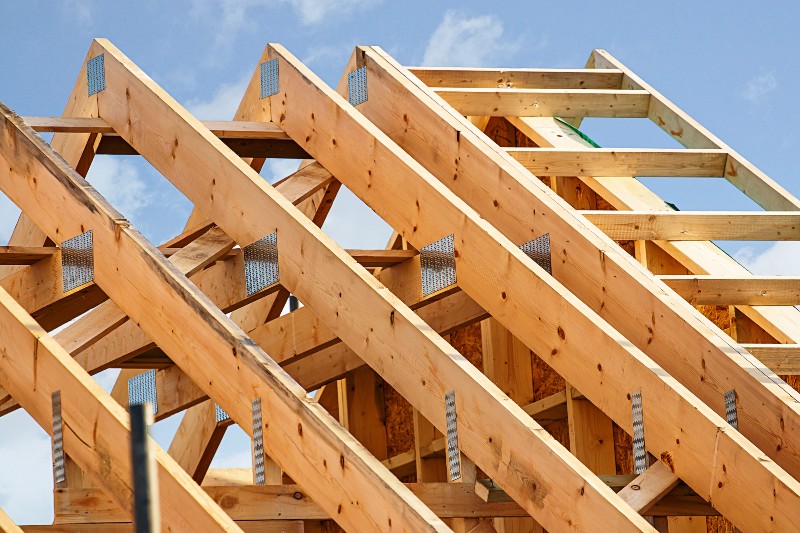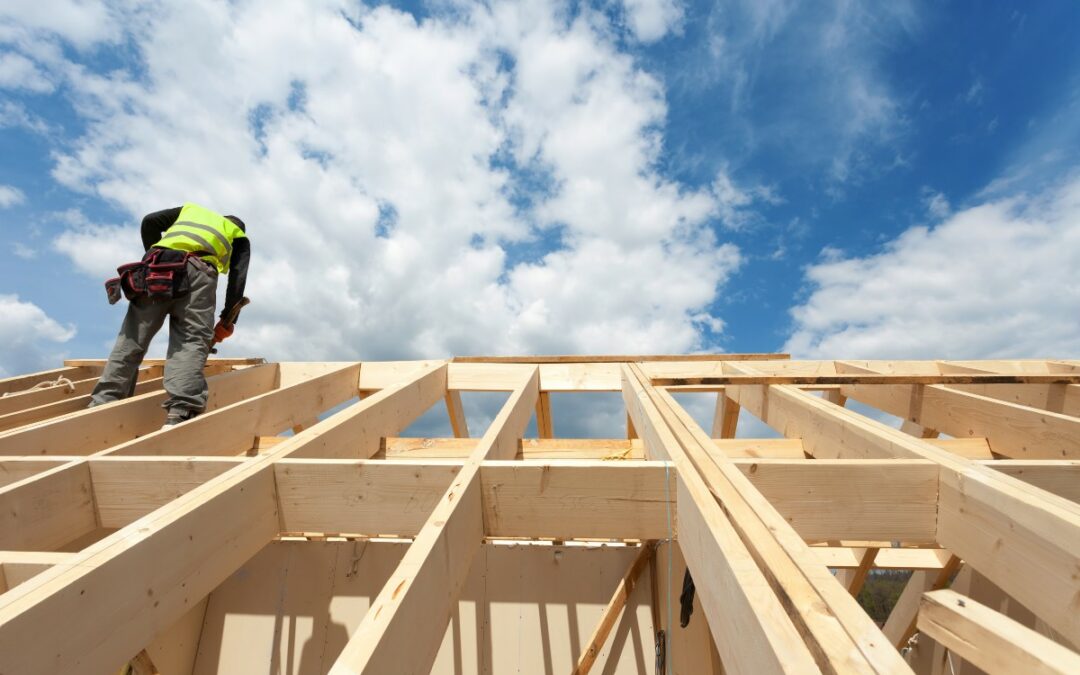Cheaper and easier to install than traditional rafters, roof trusses have become the most common way to craft a roofing frame. Read on to learn the different roof truss types and find out the benefits associated with each design option.
What Are Trusses?
Roof trusses essentially create a roofing frame. The structures determine the ultimate shape of the ceiling and roof while providing important support. Trusses are typically pre-made in a factory using affordable lightweight materials, such as 2x4s. They are then shipped to the residential construction site.
All roof truss designs have three primary parts: Bottom chords (also called ceiling joists or I-joists), top chords, and webbing or posts. They are used as alternatives to stick framing or rafters. Rafters are typically made from bigger pieces of lumber (2x10s or 2x8s) and require a skilled carpenter to custom-construct and install them at the build site.
There are many different types of trusses available for building projects. We’ve compiled a list of the most popular trusses used for residential construction.
King Post Truss
Spanning 5 to 8 meters, king post trusses are the most standard kind of truss. They use the fewest truss members: a central vertical post, one bottom chord, two top chords, and a pair of webbing chords.
Since king post trusses are created with a relatively simplistic design and few materials, they are less expensive compared to many other trusses. That said, these types of trusses cannot span especially long spaces, so they are more suited for smaller projects.
Queen Post Truss
Similar to king post trusses, these types of trusses have simple, sturdy designs. Instead of having a single king post in the center, however, queen post trusses have a pair of queen posts connected by a sturdy straining beam.
The additional posts make queen post trusses a bit pricier than king post trusses. But the two vertical queen posts allow the structure to span greater areas (8 to 12 meters), making it more suitable for larger projects.

Fink Truss
The most popular truss used in residential roof construction, these structures are able to span up to 14 meters. The webbing within a fink truss has a sort of ‘W’ shape, giving the structure a greater load-carrying capacity. The webbing is positioned to allow for storage space and things like water tanks when needed.
Fink trusses are generally considered a very cost-effective roof truss in residential construction, especially since they are able to span longer distances.
Attic Truss
Many trusses have webbing that can limit attic space. Luckily, builders can use attic trusses to solve this potential issue.
Spanning up to 25 meters, these trusses look a lot like queen post trusses; but the vertical posts are further spaced to provide more attic area. The wider the house, the greater the attic space will be. Likewise, the steeper the roof pitch, the higher the attic ceiling will be.
Gable Truss
Typically used in concert with other kinds of trusses, gable trusses serve as end caps for roofs. They have one bottom chord, a pair of top chords, and several vertical posts. Gable trusses are constructed on each end of the roof’s framework to help support roof sheathing.
Gable trusses generally cost 25% to 50% more than typical truss designs.
Scissor Truss
Scissor trusses allow builders to create vaulted ceilings. The design includes bottom chords that are sloped. This creates the dramatic ceilings in the underlying rooms. Scissor trusses combine the convenience and speed of pre-engineered trusses, while delivering the aesthetic advantage of high ceilings.
Builders can install scissor trusts in a certain part of a home and use other kinds of trusses in other parts of a home where vaulted ceilings are unwanted. From the outside, the roof will look uniform, even when one area has higher ceilings.
Spanning up to 22 meters, scissor trusses do come at a greater cost (sometimes up to 30%) compared to other types of trusses.
Need a new roof, targeted repairs or affordable restoration? A to Z is here to help. For decades we’ve provided Colorado homeowners and commercial businesses with top-quality roofing based on their unique needs. We can do the job right, while working within your schedule and budget. Contact our attentive team to learn how we can restore, repair or replace your damaged or aging roof.

